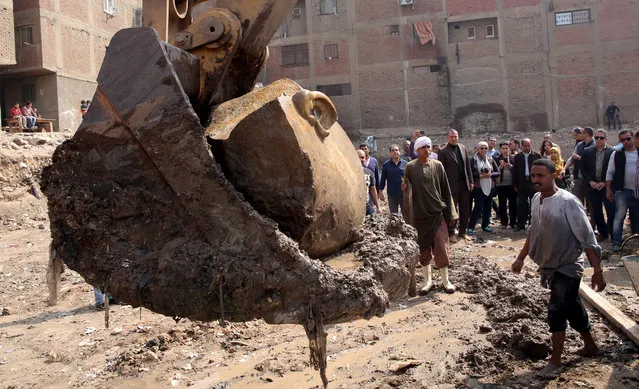
Egyptian workers lift with an excavator parts of a statue for restoration after it was unearthed at Souq al-Khamis district, at al-Matareya area, Cairo, Egypt, 09 March 2017. According to the Ministry of Antiquities, a German-Egyptian archaeological mission found in parts two 19th dynasty royal statues in the vicinity of King Ramses II temple in ancient Heliopolis. The first is an 80cm tall bust of King Seti II carved in limestone, while the second is eight meters tall carved in quartzite. There were no engravings on the latter, however discovering it at the entrance of King Ramses II temple suggests that it could belong to him. (Photo by Khaled Elfiqi/EPA)
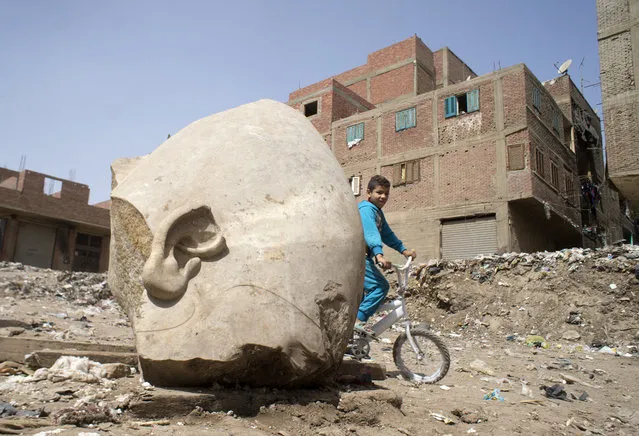
A boy rides his his bicycle past a recently discovered statue in a Cairo slum that may be of pharaoh Ramses II, in Cairo, Egypt, Friday, March 10, 2017. Archeologists in Egypt have discovered a massive statue that may be of pharaoh Ramses II, one of the country's most famous ancient rulers. The colossus, whose head was pulled from mud and groundwater by a bulldozer on Thursday, is around eight meters (yards) tall and was discovered by a German-Egyptian team. (Photo by Amr Nabil/AP Photo)
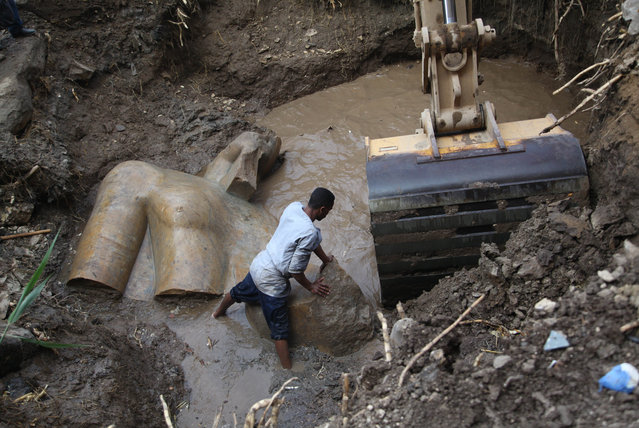
An Egyptian worker prepares to lift parts of a statue at the site of a new archeological discovery at Souq Al-Khamis district in Al-Matareya area, Cairo, Egypt on March 9 2017. According to the Ministry of Antiquities, two 19th dynasty royal statues were found in parts in the vicinity of King Ramses II temple in ancient Heliopolis (Oun) Sun Temples by a German-Egyptian archeological mission. (Photo by Xinhua News Agency/Rex Features/Shutterstock)
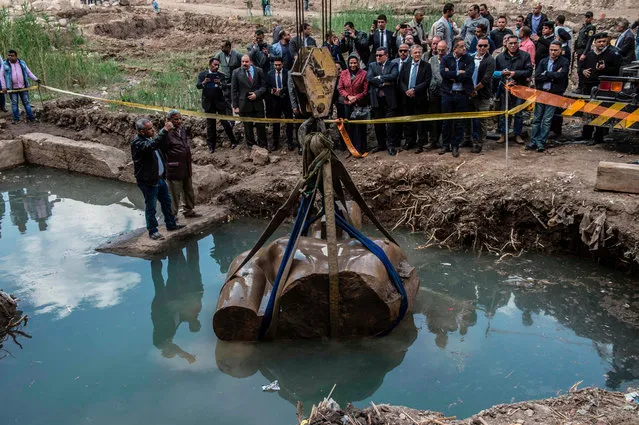
Egyptian workers excavate the statue, recently discovered by a team of German- Egyptian archeologists, in Cairo' s Mattarya district on March 13, 2017. Statues of the kings and queens of the nineteenth dynasty (1295 – 1185 BC) were unearthed in the vicinity of the Temple of Ramses II in what was the old Pharonic city. (Photo by Khaled Desouki/AFP Photo)
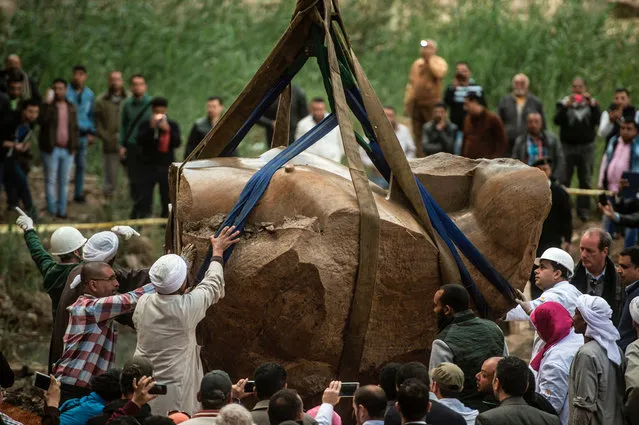
Egyptian workers excavate the statue, recently discovered by a team of German- Egyptian archeologists, in Cairo' s Mattarya district on March 13, 2017. (Photo by Khaled Desouki/AFP Photo)
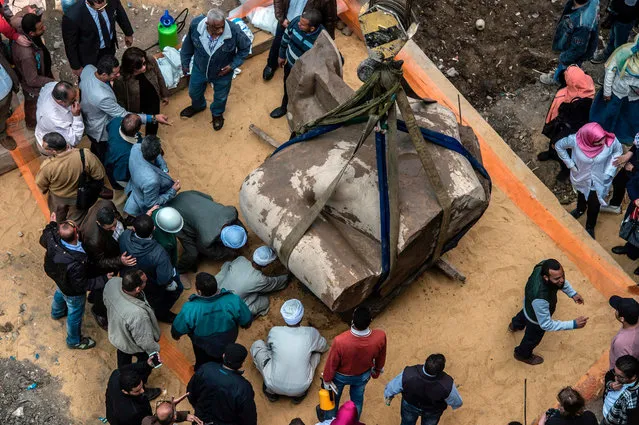
Egyptian workers excavate the statue, recently discovered by a team of German- Egyptian archeologists, in Cairo' s Mattarya district on March 13, 2017. (Photo by Khaled Desouki/AFP Photo)
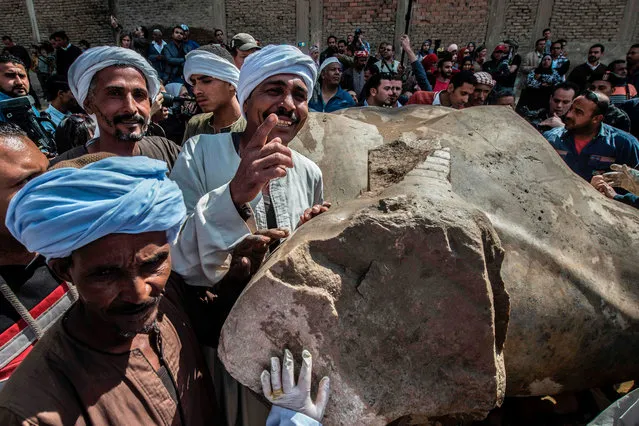
Egyptian workers pose next to an excavated statue, recently discovered by a team of German- Egyptian archeologists, in Cairo' s Mattarya district on March 13, 2017. (Photo by Khaled Desouki/AFP Photo)
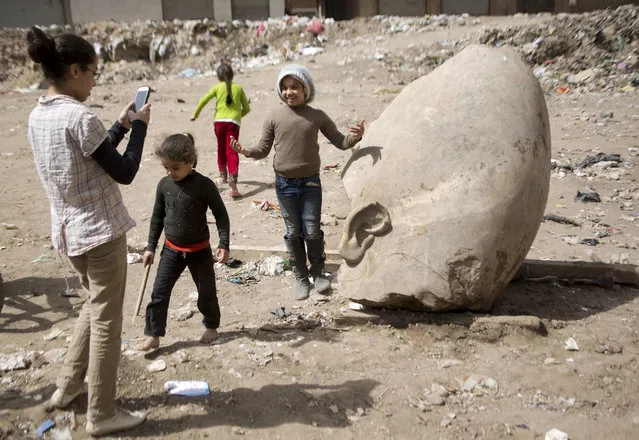
A child poses for a picture past a recently discovered statue in a Cairo slum that may be of pharaoh Ramses II, in Cairo, Egypt, Friday, March 10, 2017. (Photo by Amr Nabil/AP Photo)
15 Mar 2017 00:06:00,
post received
0 comments
